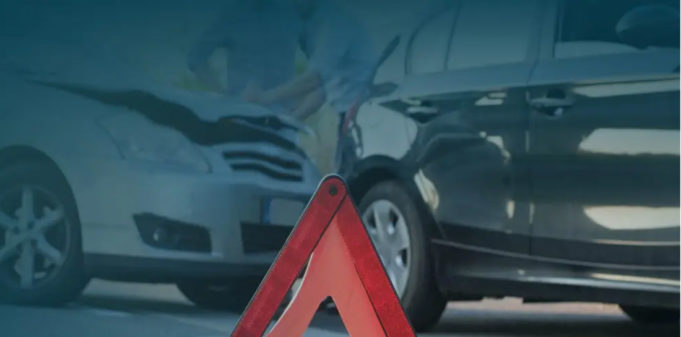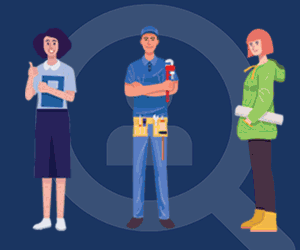You’re sitting at a red light when—BAM!—a car slams into your bumper. Or maybe traffic suddenly stops, and you hit the car in front of you. Rear-end collisions happen fast, but figuring out who’s at fault? That’s not always so simple. If you’ve been in one and are wondering who’s responsible (and whether you need a lawyer), this article breaks it all down for you.
Who Can Be at Fault for Rear-End Collisions?
When it comes to rear-end collisions, it’s not always as simple as the trailing driver being to blame. While the rear driver often gets the lion’s share of responsibility, multiple factors can shift liability. That includes the circumstances of the situation, the behavior of the drivers, and sometimes, even the conditions surrounding the crash. Ultimately, these parties can share the blame for a rear-end collision:
The rear driver (most commonly)—They’re often held responsible for failing to keep a safe following distance, speeding, or distracted driving.
The lead driver—If they suddenly stopped without warning, failed to signal lane changes, or had broken brake lights or other vehicle issues that hinder visibility.
Third-party drivers—For example, if another driver swerves into the lane of the trailing driver and forces them to hit the car in front, the third driver might be partially liable.
Vehicle manufacturers—Sometimes, it’s not a human error at all. If faulty car parts (like brakes or sensors) contributed to the crash, the manufacturer could be held accountable.
Employers/Businesses—When commercial vehicles are involved, employers might share liability. This could be due to inadequate driver training or unsafe practices.
Government entities—Believe it or not, roads can also be a factor. Poor conditions like potholes, debris, or malfunctioning traffic signals can shift the blame to the local or state government.
As you can see, the answer to this question isn’t always as simple as “the car in the back.” Figuring out who is at fault in these situations often requires looking at the entire picture—and sometimes, even the state you’re in, so before you go on to file a claim, we suggest you consult with an experienced vehicle accident lawyer.
How is Fault in Rear-End Collisions Proven?
Proving fault in rear-end collisions is about systematically collecting evidence and applying legal standards to figure out who caused the crash. First, you’ll need to prove that one driver in the rear-end collision didn’t uphold their duty to drive safely, which directly caused the crash. This is called proving negligence. For instance, if a driver was speeding, not paying attention, or tailgating, and that ultimately led to the collision (link of causation), this would be proof of said negligence.
You, as an injured party, also must prove that you’ve suffered actual harm from the rear-end collision, be it in the shape of physical injuries, medical bills, or vehicle damage. However, without evidence, you’re left with just a story. So, you also need to know which kind of evidence you need to gather.
Usually, you’ll need multiple of the following: Police reports about the crash scene, witness statements, and citations; Eyewitness testimonies from neutral bystanders regarding the sequence of events; Photographic and video footage of the scene (think dashcam or traffic cameras), vehicle positions, damage, and road conditions; Accident reconstruction from experts (e.g., they can do speed and impact analysis to figure out who did what); and Vehicle maintenance records (that is, if a mechanical failure, like brakes giving out, was part of the problem)
Besides this, figuring out what each driver was doing leading up to the crash can help in proving the fault. For instance, the rear driver is expected to keep a safe distance. But if the lead driver suddenly slams on the brakes without warning, they might be partially responsible too.
Also, if either driver broke traffic laws—say, one ran a red light or didn’t signal a turn—it can seriously affect who’s at fault. Finally, weather or road conditions, like if heavy rain forced one driver to stop unexpectedly, can play a huge role in proving fault too.
Important: There are state-level differences in how fault in rear-end collisions is treated. Most states follow the rule of comparative negligence, where fault is divided among the parties based on their share of responsibility; however, there are some (e.g., Virginia) in which even if you’re only at 1% fault, you can’t recover any damages at all.
That’s why, when trying to prove fault, having an expert who knows the ins and outs of the law can make all the difference.
Can Multiple Parties Be at Fault for Rear-End Collision?
Yep, and it happens more often than you’d think.
While the driver in the back is usually assumed to be at fault, that’s not always the full story. Liability isn’t just about who hit whom but also about why the accident happened and whether multiple drivers (or even external factors) played a role.
Take chain reaction crashes as an example. Car C slams into Car B, which then hits Car A. Who’s at fault? Usually, Car C takes most of the blame for setting off the domino effect. But if Car B was tailgating or stopped suddenly for no reason, they could share liability. The same applies in cases where Car B was following Car A too closely, or they were too distracted and slow to react, or if they were speeding in heavy traffic.
Also, other factors (mechanical failures and poor road conditions) can shift the blame, too. So, like we said, the fault isn’t just about who hit whom—it’s about what set the accident in motion.
How Do I Report an Insurance Claim for Rear-End Collision
After making sure everyone involved in a rear-end collision is safe, call the police to document the accident and make sure to secure that police report. Document the accident scene yourself, as well, and gather contact information from any present witnesses. With that information, contact our insurance provider as soon as possible to report the accident.
Since rear-end collisions typically find the trailing driver at fault, you will likely need to file a claim with the other driver’s insurance company, and in that case, we suggest you consult a vehicle accident lawyer beforehand.












